It looks like you're using an Ad Blocker.
Please white-list or disable AboveTopSecret.com in your ad-blocking tool.
Thank you.
Some features of ATS will be disabled while you continue to use an ad-blocker.
19
share:
I just read an article that supports my belief that there once existed alien life on Mars. Now, I'm not talking about the 3 foot high, green skinned
beings that Hollywood portrayed in the Sci-Fi craze of the 1950's. I'm talking about an organism that is the size of a grain of rice, similar to
ones that existed on Earth @540 million years ago. These tiny creatures evolved "slithering or clambering" in sediment and in shallow bodies of
water.
Scientists named this creature "Saccorhytus" and they were discovered in China. They are classified as deuterostomes:
www.wired.co.uk...
They are called "Saccorhytus" because:
www.npr.org... news
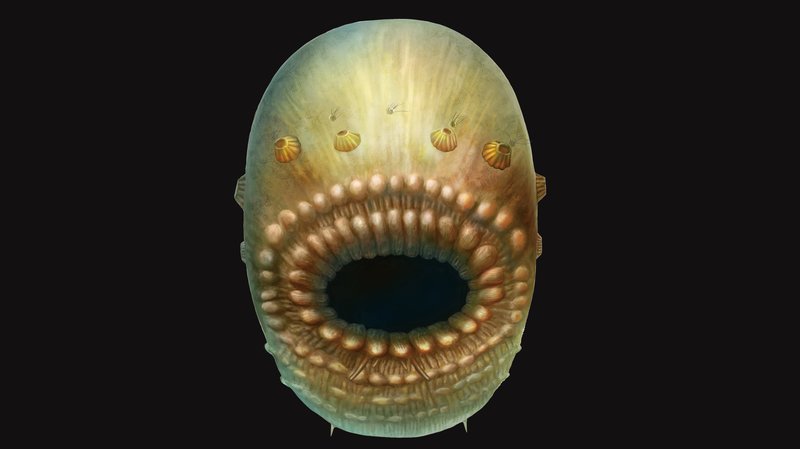

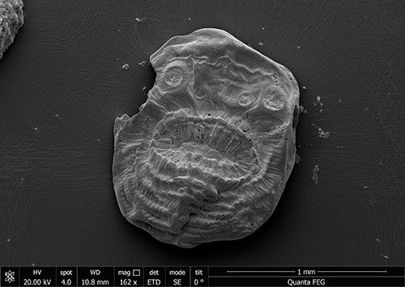
These scientists also agree that these very tiny creatures were the ancestors of all kinds of mammals that walked and breathed.....including man.
www.npr.org... news
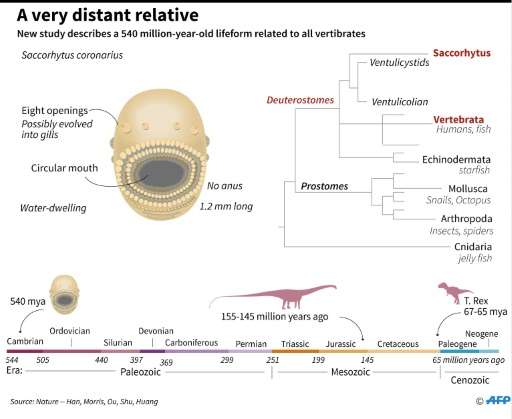
Since scientists have concluded that Mars at one time had an atmosphere, as well as liquid water, couldn't creatures like these have developed on Mars?
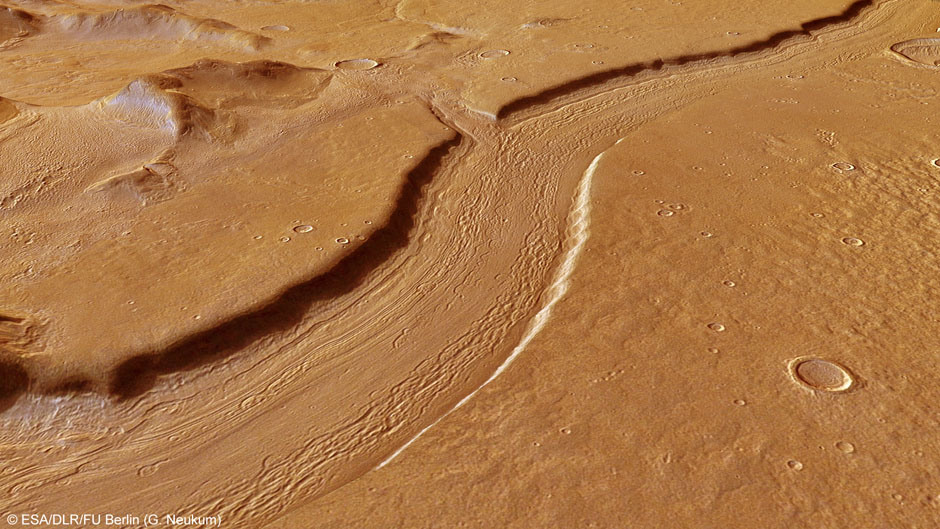

Obviously, one can conclude that since Mars had large bodies of water, including rivers, creatures like these could've flourished. Since this occurred billions of years ago on Mars, couldn't other creatures have evolved and died off after the water and atmosphere on Mars disappeared?
www.space.com...
Scientists named this creature "Saccorhytus" and they were discovered in China. They are classified as deuterostomes:
The bag-like invertebrates, found in Shaanxi, China are less than 1.2 mm long with pleated, circular mouths and up to eight openings along their bizarre bodies. Classified as deuterostomes, a diverse group of animals of vertebrates (including us), starfish and acorn worms, it is believed that the creatures lived in water around 540 million years ago, making them the earliest known deuterostomes to date – and as a result, our oldest relatives.
www.wired.co.uk...
They are called "Saccorhytus" because:
"We arrived at the word Saccorhytus, which basically means a wrinkled bag," says Conway Morris, a paleobiologist at the University of Cambridge in the U.K. Actually, this thing is a lot uglier than a wrinkled bag. It's basically a giant gaping mouth with spikes and some extra holes — probably for oozing waste.
www.npr.org... news



These scientists also agree that these very tiny creatures were the ancestors of all kinds of mammals that walked and breathed.....including man.
one of the very few hallmarks of all deuterostomes is what we call gill slits," says Conway Morris. Structures like those may have been precursors to gills, which were in turn an important stepping stone on the way to animals that were capable of walking and breathing on land.
but it's an ancestor of a major animal group that includes humans. So humans probably came from something that looked like it. "We come from these tiny, small blobs. That, I think, is an important thing for people to realize," says Van Roy.
www.npr.org... news

Since scientists have concluded that Mars at one time had an atmosphere, as well as liquid water, couldn't creatures like these have developed on Mars?


Obviously, one can conclude that since Mars had large bodies of water, including rivers, creatures like these could've flourished. Since this occurred billions of years ago on Mars, couldn't other creatures have evolved and died off after the water and atmosphere on Mars disappeared?
Observations of the Red Planet indicate that rivers and oceans may have been prominent features in its early history. Billions of years ago, Mars was a warm and wet world that could have supported microbial life in some regions.
Curiosity has found yet more evidence of water flowing on ancient Mars. The 1-ton rover rolled through an ancient stream bed shortly after touching down in August 2012, and it has examined a number of rocks that were exposed to liquid water billions of years ago.
www.space.com...
Why anyone would be surprised or amazed that there was once life on Mars is beyond me. It's pretty well accepted that Mars once had running water and
even oceans. Life is a natural once you have those conditions.
Tharks, though, maybe not.
Tharks, though, maybe not.
originally posted by: schuyler
Why anyone would be surprised or amazed that there was once life on Mars is beyond me. It's pretty well accepted that Mars once had running water and even oceans. Life is a natural once you have those conditions.
Tharks, though, maybe not.
Im the opposite, my theory is when Mars had a magnetosphere the Suns heat/radiation was alot less back then, so I dont think it has ever been in the goldilocks zone. I would be more iclined to look at Venus, its well beleived that it was in the goldilocks zone.
edit on 30-1-2017 by muSSang
because: (no reason given)
a reply to: schuyler
Fully agree.
I think it is in the Goldilocks zone or close enough, had plenty of water, once an atmosphere conducive to life, 24 hour rotation period (funny that) to provide even heating and light exposure.
Do we have an estimate on how long ago those bodies of water existed in full? Id imagine the amount of cratering, especially in the regions where we can identify where the ocean was, can yield a good approximation.
The above poster mentions the magnetosphere. I dont know if it ever had one, but if it did, i think that olympos mons caused its end with the high volume of mantle material pouring onto the surface.
Fully agree.
I think it is in the Goldilocks zone or close enough, had plenty of water, once an atmosphere conducive to life, 24 hour rotation period (funny that) to provide even heating and light exposure.
Do we have an estimate on how long ago those bodies of water existed in full? Id imagine the amount of cratering, especially in the regions where we can identify where the ocean was, can yield a good approximation.
The above poster mentions the magnetosphere. I dont know if it ever had one, but if it did, i think that olympos mons caused its end with the high volume of mantle material pouring onto the surface.
edit on 30-1-2017 by OneGoal because: (no reason given)
edit on 30-1-2017 by OneGoal because: (no reason given)
I recall a story from back in the 90's where a meteorite, thought to be from Mars, had fossils from micro-organisms.
NASA
spider.seds.org...

A NASA research team of scientists at the Johnson Space Center (JSC), Houston, TX, and at Stanford University, Palo Alto, CA, has found evidence that strongly suggests primitive life may have existed on Mars more than 3.6 billion years ago.
NASA
spider.seds.org...

originally posted by: OneGoal
The above poster mentions the magnetosphere. I dont know if it ever had one, but if it did, i think that olympos mons caused its end with the high volume of mantle material pouring onto the surface.
LINK
Unlike the Earth, Mars has no inner dynamo to create a major global magnetic field. This, however, does not mean that Mars does not have a magnetosphere; simply that it is less extensive than that of the Earth....
...Despite the fact that Mars no longer has an internal dynamo capable of generating a large global magnetic field as on Earth, there is evidence to suggest that Mars may once have had such a dynamo. This is mainly supported by observations from the American satellite mission MGS (Mars Global Surveyor), which from 1997 to 2006 measured the magnetic field of Mars using a small magnetometer from an altitude of 100-400 km above the planet’s surface. These measurements showed the existence of powerful magnetic crustal fields on the planet’s surface, far more powerful than those found on Earth.
a reply to: shawmanfromny
Good topic and it would be refreshing to see a conversation about alien life, minus the Men In Black aspect.
I'd not be at all surprised to find out that life of this kind existed there at one time.
I have not had time to read it yet, but this article on Gizmodo may have some relevent information.
The links at the bottom of the article may have something relevant also.
a reply to: Blaine91555
Holy smokes, that is news to me.
"...magnetic crustal fields, far more powerful than those found on Earth."
A magnetosphere far stronger than Earth's on a tiny little planet like Mars? Thats really interesting. Would that indicate a more rapid core spin? Upon further investigation it appears that we think Mars has a larger core than earth and relatively speaking to the total diameter, much larger. Perhaps this is why.
If it did indeed spin at one time, what the hell made it stop spinning faster than the planet's overall rotational period?
My best guess is that the theorized much smaller mantle poured out most of its material out through olympus mons and the tharsis volcanoes...perhaps creating a direct contact between solid crust and core, essentially creating a lock between the two and made the core and outer layers of the planet spin in sync? From what ive read, the mantle is way, way smaller than that of Earth's. Combine this idea with the huge size of Olympus mons (size of texas and 63000 feet tall).
Thatd be like a volcano the size of greenland and 85000 tall on earth. If its a shield volcano like Mons, it is comprised totally of mantle material. A volcano that size on earth could create issues for our mantle and core dynamo too, id imagine. A lot to think about.
Anyway, that got slightly tangential and off topic. On point, i am nearly certain that there was life on Mars at one point. Its then a matter of when and not if, to find these fossils or other evidence of that life.
Holy smokes, that is news to me.
"...magnetic crustal fields, far more powerful than those found on Earth."
A magnetosphere far stronger than Earth's on a tiny little planet like Mars? Thats really interesting. Would that indicate a more rapid core spin? Upon further investigation it appears that we think Mars has a larger core than earth and relatively speaking to the total diameter, much larger. Perhaps this is why.
If it did indeed spin at one time, what the hell made it stop spinning faster than the planet's overall rotational period?
My best guess is that the theorized much smaller mantle poured out most of its material out through olympus mons and the tharsis volcanoes...perhaps creating a direct contact between solid crust and core, essentially creating a lock between the two and made the core and outer layers of the planet spin in sync? From what ive read, the mantle is way, way smaller than that of Earth's. Combine this idea with the huge size of Olympus mons (size of texas and 63000 feet tall).
Thatd be like a volcano the size of greenland and 85000 tall on earth. If its a shield volcano like Mons, it is comprised totally of mantle material. A volcano that size on earth could create issues for our mantle and core dynamo too, id imagine. A lot to think about.
Anyway, that got slightly tangential and off topic. On point, i am nearly certain that there was life on Mars at one point. Its then a matter of when and not if, to find these fossils or other evidence of that life.
edit on 30-1-2017 by
edit on 30-1-2017 by OneGoal because: (no reason given)
edit on 30-1-2017 by OneGoal because: (no
reason given)
extra DIV I've always found extremophile's interesting and good evidence that a place need not be like Earth to have life of some kind.
Wikipedia has a list of links to info about various kinds.
Wikipedia has a list of links to info about various kinds.
Acidophile
An organism with optimal growth at pH levels of 3 or below
Alkaliphile
An organism with optimal growth at pH levels of 9 or above
Anaerobe
An organism that does not require oxygen for growth such as Spinoloricus Cinzia. Two sub-types exist: facultative anaerobe and obligate anaerobe. A facultative anaerobe can tolerate anaerobic and aerobic conditions; however, an obligate anaerobe would die in the presence of even trace levels of oxygen
Cryptoendolith
An organism that lives in microscopic spaces within rocks, such as pores between aggregate grains; these may also be called Endolith, a term that also includes organisms populating fissures, aquifers, and faults filled with groundwater in the deep subsurface
Halophile
An organism requiring at least 0.2M concentrations of salt (NaCl) for growth[11]
Hyperthermophile
An organism that can thrive at temperatures above 80 °C, such as those found in hydrothermal systems
Hypolith
An organism that lives underneath rocks in cold deserts
Lithoautotroph
An organism (usually bacteria) whose sole source of carbon is carbon dioxide and exergonic inorganic oxidation (chemolithotrophs) such as Nitrosomonas europaea; these organisms are capable of deriving energy from reduced mineral compounds like pyrites, and are active in geochemical cycling and the weathering of parent bedrock to form soil
Metallotolerant
Capable of tolerating high levels of dissolved heavy metals in solution, such as copper, cadmium, arsenic, and zinc; examples include Ferroplasma sp., Cupriavidus metallidurans and GFAJ-1[12][13][14]
Oligotroph
An organism capable of growth in nutritionally limited environments
Osmophile
An organism capable of growth in environments with a high sugar concentration
Piezophile
(Also referred to as barophile). An organism that lives optimally at high pressures such as those deep in the ocean or underground;[15] common in the deep terrestrial subsurface, as well as in oceanic trenches
Polyextremophile
A polyextremophile (faux Ancient Latin/Greek for 'affection for many extremes') is an organism that qualifies as an extremophile under more than one category
Psychrophile/Cryophile
An organism capable of survival, growth or reproduction at temperatures of -15 °C or lower for extended periods; common in cold soils, permafrost, polar ice, cold ocean water, and in or under alpine snowpack
Radioresistant
Organisms resistant to high levels of ionizing radiation, most commonly ultraviolet radiation, but also including organisms capable of resisting nuclear radiation
Thermophile
An organism that can thrive at temperatures between 45–122 °C
Thermoacidophile
Combination of thermophile and acidophile that prefer temperatures of 70–80 °C and pH between 2 and 3
Xerophile
An organism that can grow in extremely dry, desiccating conditions; this type is exemplified by the soil microbes of the Atacama Desert
In astrobiology
Astrobiology is the field concerned with forming theories, such as panspermia, about the distribution, nature, and future of life in the universe. In it, microbial ecologists, astronomers, planetary scientists, geochemists, philosophers, and explorers cooperate constructively to guide the search for life on other planets. Astrobiologists are particularly interested in studying extremophiles,[16] as many organisms of this type are capable of surviving in environments similar to those known to exist on other planets. For example, Mars may have regions in its deep subsurface permafrost that could harbor endolith communities.[16] The subsurface water ocean of Jupiter's moon Europa may harbor life, especially at hypothesized hydrothermal vents at the ocean floor.
Recent research carried out on extremophiles in Japan involved a variety of bacteria including Escherichia coli and Paracoccus denitrificans being subject to conditions of extreme gravity. The bacteria were cultivated while being rotated in an ultracentrifuge at high speeds corresponding to 403,627 g (i.e. 403,627 times the gravity experienced on Earth). Paracoccus denitrificans was one of the bacteria which displayed not only survival but also robust cellular growth under these conditions of hyperacceleration which are usually found only in cosmic environments, such as on very massive stars or in the shock waves of supernovas. Analysis showed that the small size of prokaryotic cells is essential for successful growth under hypergravity. The research has implications on the feasibility of panspermia.[17][18]
On 26 April 2012, scientists reported that lichen survived and showed remarkable results on the adaptation capacity of photosynthetic activity within the simulation time of 34 days under Martian conditions in the Mars Simulation Laboratory (MSL) maintained by the German Aerospace Center (DLR).[19][20]
On 29 April 2013, scientists at Rensselaer Polytechnic Institute, funded by NASA, reported that, during spaceflight on the International Space Station, microbes seem to adapt to the space environment in ways "not observed on Earth" and in ways that "can lead to increases in growth and virulence".[21]
On 19 May 2014, scientists announced that numerous microbes, like Tersicoccus phoenicis, may be resistant to methods usually used in spacecraft assembly clean rooms. It's not currently known if such resistant microbes could have withstood space travel and are present on the Curiosity rover now on the planet Mars.[22]
On 20 August 2014, scientists confirmed the existence of microorganisms living half a mile below the ice of Antarctica.[
a reply to: OneGoal
This article discusses that. It's all theory though.
I recall seeing or reading something about the size of our very large in relationship to the size of our planet moon as having to do with how the heat and convection in our core stays as it is.
This article discusses that. It's all theory though.
I recall seeing or reading something about the size of our very large in relationship to the size of our planet moon as having to do with how the heat and convection in our core stays as it is.
a reply to: shawmanfromny
I'd forgotten about the Allan Hills 84001 Mars meteorite found in Antarctica.
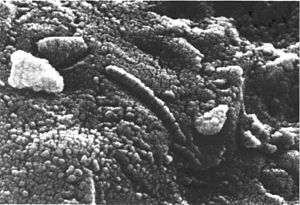
I remember getting excited about that only to have it explained away. Still though it started a broader conversation.
I'd forgotten about the Allan Hills 84001 Mars meteorite found in Antarctica.

Allan Hills 84001 (commonly abbreviated ALH84001[1]) is a meteorite that was found in Allan Hills, Antarctica on December 27, 1984 by a team of U.S. meteorite hunters from the ANSMET project. Like other members of the group of SNCs (shergottite, nakhlite, chassignite), ALH84001 is thought to be from Mars. However, it does not fit into any of the previously discovered SNC groups. On discovery, its mass was 1.93 kilograms (4.3 lb).
The meteorite is best known for gaining intense media attention in 1996 when a group of scientists claimed to have found evidence for microscopic fossils of Martian bacteria in it, culminating in then U.S. president Bill Clinton giving a speech about the potential discovery.[2] These claims were controversial from the beginning, and the wider scientific community ultimately rejected the hypothesis once all the unusual features in the meteorite had been explained without requiring life to be present. Despite there being no convincing evidence of Martian life, the initial paper and scientific and public attention caused by it are considered to be turning points in the history of the developing science of astrobiology.
I remember getting excited about that only to have it explained away. Still though it started a broader conversation.
This was our ancestor? Scary...
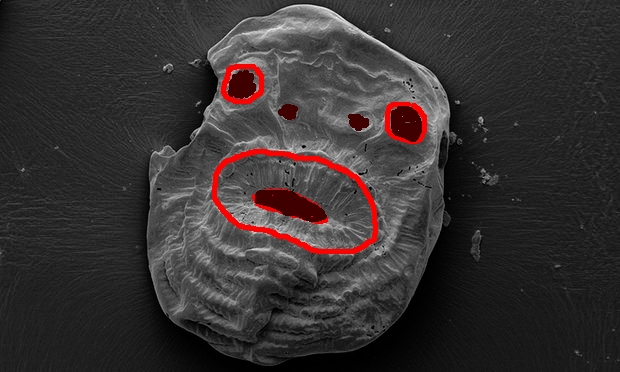
While there's really good possibility that life on Mars did exist in the past, its planetary history precludes evolution of anything but single-celled organisms and perhaps some very primitive multicellar ones.
On Earth, after most primitive single-celled organisms appeared around 3.8 billion years ago, it took almost another two billion years for proper eukaryotic cells to evolve, and then slightly over another billion years for the first multicellar organisms to evolve. www.newscientist.com...
Mars lost its magnetic field and most of its atmosphere pretty soon after formation (around 4 billion years ago), so any life that might have appeared there didn't get much chance to evolve.
The only better possibility is that the primitive life that did appear on Mars in those earth-like times, survived somewhere hidden from the harsh outer environment, and perhaps evolved into more complex forms that we can't even guess about, hiding somewhere in deep caves, rock cracks, and subterranean ices.

While there's really good possibility that life on Mars did exist in the past, its planetary history precludes evolution of anything but single-celled organisms and perhaps some very primitive multicellar ones.
On Earth, after most primitive single-celled organisms appeared around 3.8 billion years ago, it took almost another two billion years for proper eukaryotic cells to evolve, and then slightly over another billion years for the first multicellar organisms to evolve. www.newscientist.com...
Mars lost its magnetic field and most of its atmosphere pretty soon after formation (around 4 billion years ago), so any life that might have appeared there didn't get much chance to evolve.
The only better possibility is that the primitive life that did appear on Mars in those earth-like times, survived somewhere hidden from the harsh outer environment, and perhaps evolved into more complex forms that we can't even guess about, hiding somewhere in deep caves, rock cracks, and subterranean ices.
well we already found the worm-like fossils in a rock from Mars.
Yeah its true!
Yeah its true!
I've done a lot of looking, and I haven't seen anything like that. But the rovers really don't have cameras good enough to see that size of fossil,
so it might be there.
But I doubt it.
But I doubt it.
Fossil Life in Martian Rock Found
While most people treat this as inconclusive, many scientists believe that it is conclusive.
They did not hold a major worldwide press conference for nothing.
They also did chemical analysis of Mars soil that concluded life.
While most people treat this as inconclusive, many scientists believe that it is conclusive.
They did not hold a major worldwide press conference for nothing.
They also did chemical analysis of Mars soil that concluded life.
a reply to: Blaine91555
Not sure what this means in the Wikipedia article.
Is it a rock from Mars? .. it is!
I don't see any evidence saying its not.
These claims were controversial from the beginning, and the wider scientific community ultimately rejected the hypothesis once all the unusual features in the meteorite had been explained without requiring life to be present.
Not sure what this means in the Wikipedia article.
Is it a rock from Mars? .. it is!
I don't see any evidence saying its not.
You find a lot of these kinds of circular things on Mars, but I don't think they have anything do to with microscopic life. I think that NASA / JPL
has actually started looking more at stratified layers, like I've done for a while, to see things that go "against the grain," as it were:
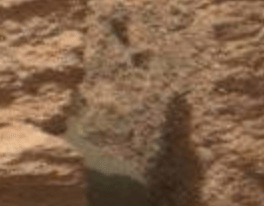
mars.jpl.nasa.gov...

mars.jpl.nasa.gov...
new topics
-
Joe Rogan conspiracy (maybe)
ATS Skunk Works: 54 minutes ago -
Results of the use of the Oreshnik missile system in Dnepropetrovsk
World War Three: 3 hours ago -
Nigel Farage now the Most Favoured UK Politician
Regional Politics: 4 hours ago -
Little Johnny and Larry should team up
General Chit Chat: 11 hours ago -
Will Us use alien technology to fight in ww3?
World War Three: 11 hours ago
top topics
-
Results of the use of the Oreshnik missile system in Dnepropetrovsk
World War Three: 3 hours ago, 10 flags -
Little Johnny and Larry should team up
General Chit Chat: 11 hours ago, 9 flags -
Shane Gillis commercial
Jokes, Puns, & Pranks: 17 hours ago, 4 flags -
Will Us use alien technology to fight in ww3?
World War Three: 11 hours ago, 2 flags -
Nigel Farage now the Most Favoured UK Politician
Regional Politics: 4 hours ago, 2 flags -
Joe Rogan conspiracy (maybe)
ATS Skunk Works: 54 minutes ago, 1 flags
active topics
-
Results of the use of the Oreshnik missile system in Dnepropetrovsk
World War Three • 78 • : CriticalStinker -
Joe Rogan conspiracy (maybe)
ATS Skunk Works • 2 • : watchitburn -
Little Johnny and Larry should team up
General Chit Chat • 3 • : bluesman023 -
President-Elect TRUMP Picks Former Florida A.G. PAM BONDI to be U.S. Attorney General.
2024 Elections • 52 • : VariedcodeSole -
Well we know Putins ICBMs won't fail in their silos
World War Three • 190 • : Lazy88 -
President-Elect DONALD TRUMP's 2nd-Term Administration Takes Shape.
Political Ideology • 238 • : WeMustCare -
Will Us use alien technology to fight in ww3?
World War Three • 11 • : BeyondKnowledge3 -
A Mysterious Orb filmed over NYC by local news
Aliens and UFOs • 25 • : ArMaP -
The Popular Vote does not matter
Political Issues • 14 • : texas thinker -
Shane Gillis commercial
Jokes, Puns, & Pranks • 2 • : Flyingclaydisk
19
